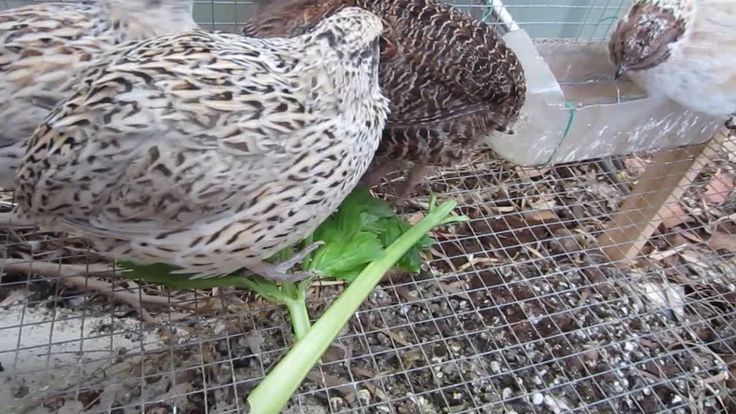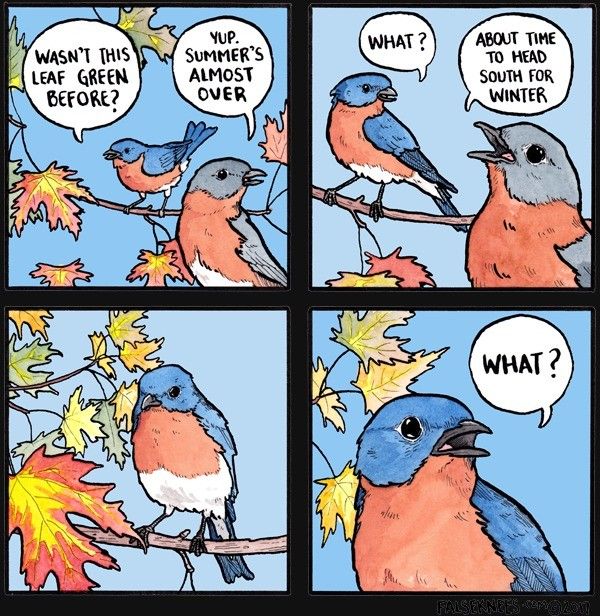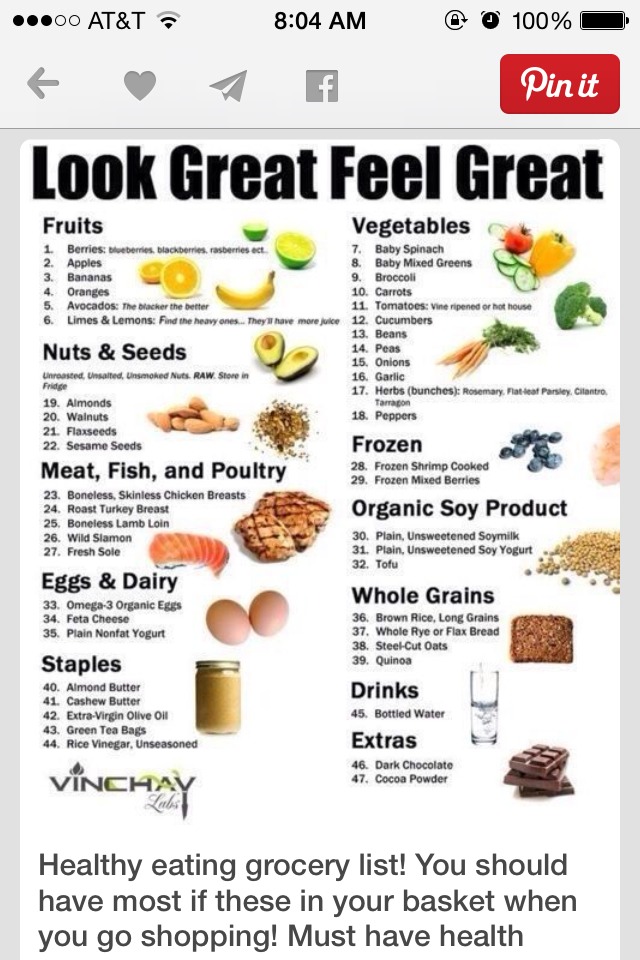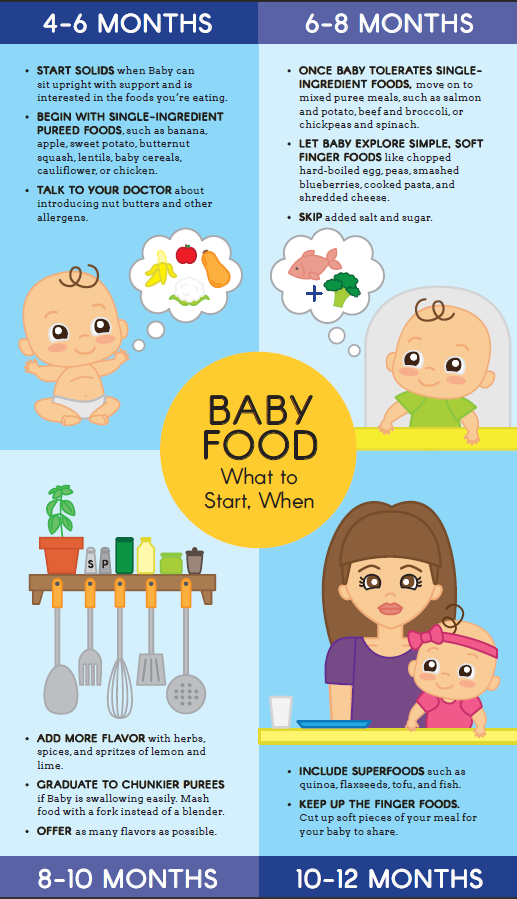Baby food mom blog
Homemade Baby Food | Mom Life
This post may have affiliate links, which means I may receive commissions if you choose to purchase through links I provide (at no extra cost to you). As an Amazon Associate, I earn from qualifying purchases. Read more about these links in my disclosure policy.
Jump to RecipeA HUGE benefit of making your own homemade baby food, besides the huge cost savings you’ll see, is that you can adjust flavors based on your kid’s own pallets. Plus, you know exactly what is in the food that you’re feeding them!
Can I just say that my little Skylar is an eater. As in, he eats everything, he likes just about everything… put it all together and he likes to eat a lot of everything. I’ve always enjoyed making baby food for my kids and when Skye was first old enough to start eating I was excited to go at it again… and then, he wouldn’t eat.
For about two months I slowly tried different things and with each and every taste and texture we tried, he didn’t want anything to do with it. At first, I started to worry, and then realized, again, that every child is different and is ready in their own time.
So we waited. And waited. And waited. Finally, when I tried again (after noticing he was interested in what we were eating), he liked his food, and he hasn’t stopped eating since.
Sometimes we put too much pressure on us or on our kids for what we think they are ready for, when we just need to trust they’ll eat the right things in the right time, and keep giving them the opportunity to taste and try new flavors.
WHY HOMEMADE BABY FOOD?
A HUGE benefit of making your own homemade baby food, besides the huge cost savings you’ll see, is that you can adjust flavors based on your kid’s own pallets. Plus, you know exactly what is in the food that you’re feeding them!
Check out our Baby Food in an Instant Cookbook
All-Natural, Prep-Ahead Recipes for a Happy, Healthy Baby!
More than 80 baby food recipes for every stage are designed with make-ahead prep and simple refrigerator and freezer storage in mind―so you spend your time snuggling, not stuck in the kitchen.

WHAT AGE SHOULD I START OFFERING BABY FOOD?
Now that Skylar is a year old, I thought it was time I shared a few of his favorite flavors and our easy homemade baby food recipes here. Of course, he eats plenty of meals with us now since he can chew and handle the many different textures of our food, but I still make some purees that he thoroughly enjoys.
I like to follow the old adage, “food before one is just for fun.” There isn’t a hard start time to when your baby should be eating food, as long as they’re healthy and thriving. Of course, mamas, trust your gut.
This doesn’t mean that we don’t offer food before one year old. We absolutely do!
We like to let our babies experience and try the different tastes of fruits and veggies. The recommendation with first baby food recipes is to start with ONE food at a time, and then as you can see that their tummy can handle that food, you can begin to mix flavors.
I just use our blender to puree our little one’s homemade baby food, though a baby food maker or food processor works wonderfully as well.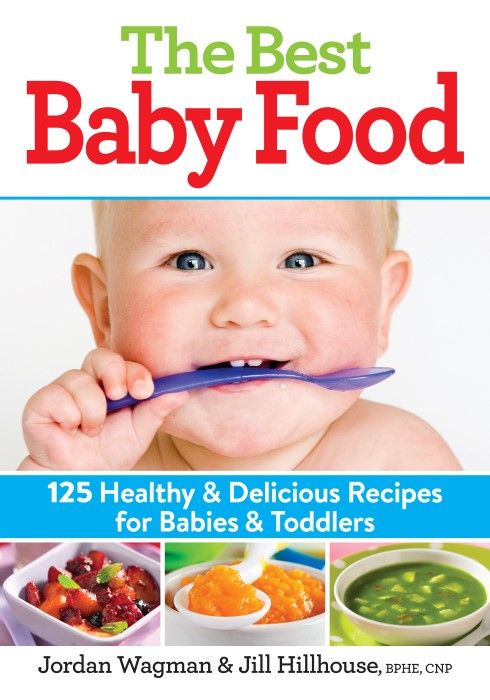 It’s easy to store a bit in the fridge for a couple of days, and I love having healthy options ready-to-eat when needed. If I need to store any food longer than a couple of days, I freeze it!
It’s easy to store a bit in the fridge for a couple of days, and I love having healthy options ready-to-eat when needed. If I need to store any food longer than a couple of days, I freeze it!
It makes it easy to use ice cube trays for this, and freeze the purees in 1-oz cubes. Once frozen, pop out the cubes and store them in a ziplock bag in the freezer.
This makes it SO easy to grab one or two cubes (1-2 ounces of baby food) and either reheat when needed or put in a container to take with us for the day and by the time we needed to use it, baby’s food will be thawed and ready to eat.
While this is still a very convenient and cost-effective process, there are some other great options available now like these freezer storage trays and this set of trays (with pouches) that make the cube-making process simple… and cute too!
SHOP ALL OF OUR HOMEMADE BABY FOOD KITCHEN ESSENTIALS HERE.
JavaScript is currently disabled in this browser.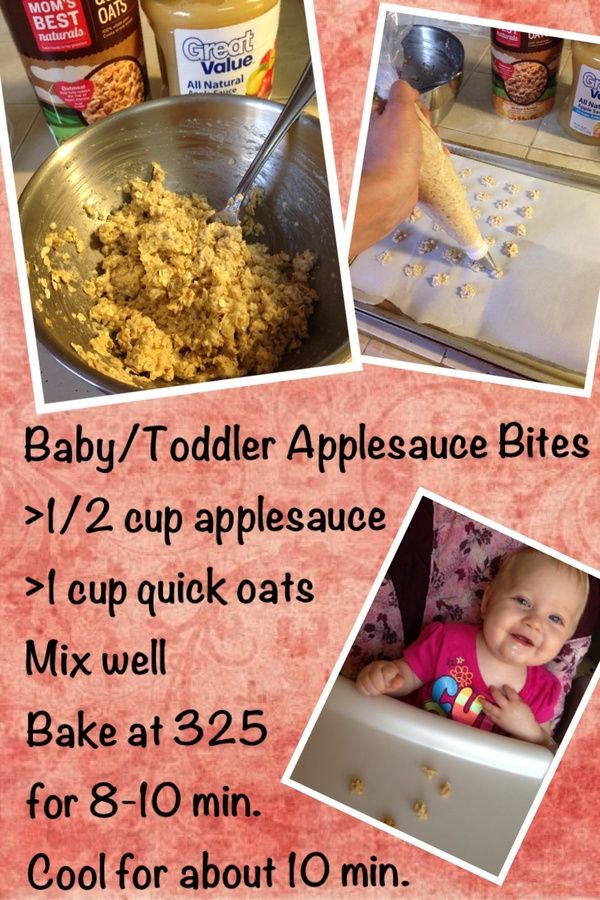 Reactivate it to view this content.
Reactivate it to view this content.
It’s been fun trying new flavor combinations and finding some of Skye’s favorite homemade baby food.
I decided that I didn’t want to blend any meat into his purées, even though many do (or when you purchase baby food, there are meat versions).
We wanted to wait and introduce meats until he could eat them in small enough pieces, which he does now. If you’d like to add meats to any of these recipes, just make certain it’s cooked well beforehand.
HOMEMADE BABY FOOD RECIPES
For each “recipe” below, wash, peel and chop the produce, then either cook or use raw as noted. Many of these purées require a little liquid to get them smooth – add water to the blender a little at a time until the mixture is the consistency you’d like.
I didn’t list exact amounts for every ingredient… and you don’t have to worry about being overly exact. Play with proportions and taste, you’ll know when you get the right amount for you and your baby’s pallet.
For most of the recipes, I used one of each of the produce listed, except for the pineapple… I just used about a cup of fresh-cut pineapple, and added until we liked the taste.
So now, here are of some of our recent favorite homemade baby food combinations:
Ingredients
- 1 Sweet Potato
- 2 Apples
- 1 Pear
- 1 Bag Frozen Peas
- 1 Banana
- 1 Avocado
- 1 C Pineapple
- 1 Mango
- Handful Kale
- Handful Spinach
- 1 C Yogurt (Plain or Vanilla)
- Dash of Cinnamon
Instructions
Sweet potato with apple and cinnamonSteam peeled apple. Place the sweet potato in the microwave until cooked through and fork soft, then cut in half and scoop the meat of the sweet potato out of the skin and place into blender. Add the steamed apple, a dash of cinnamon, and water as needed. Blend until smooth. Optional: You can use coconut water or non-dairy milk to create other flavor profiles.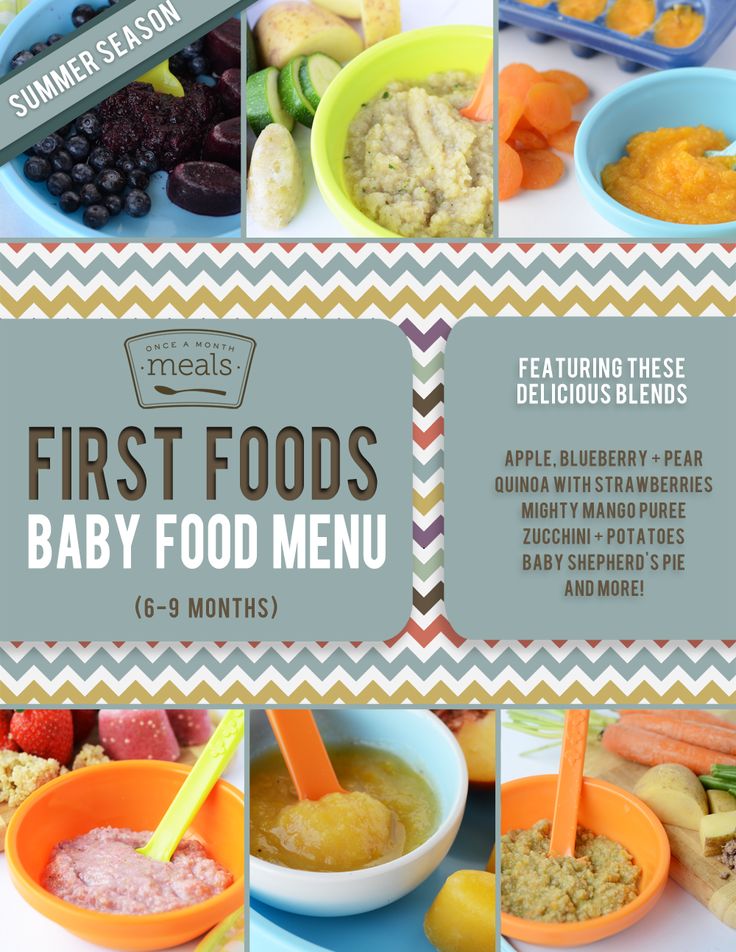
Spinach, pear and pea
Peel the pear and steam. Steam the spinach. Cook peas according to package directions. Mix all in a blender and blend until smooth.
Banana, avocado, pineapple and yogurt
Place peeled raw banana, avocado, sliced pineapple and cup of yogurt in blender and blend until smooth.
Mango, kale and apple
Peel and steam mango and apple. Steam kale. Place in blender and blend until smooth.
Notes
The great thing about these recipes, is that you really don't need exact measurements! Use approximations, and adjust according to the texture that your baby needs and taste preferences.
When preparing food for your little one, make sure to wash hands and utensils before use, and if possible try to purchase organic for at least "The Dirty Dozen" – peaches, apples, sweet bell peppers, celery, nectarines, strawberries, cherries, pears, grapes (imported), spinach, lettuce, and potatoes.
See our Favorite Fall Homemade Baby Food Recipes!
Oh, and my older kids like to swipe these packets from the fridge and suck them down.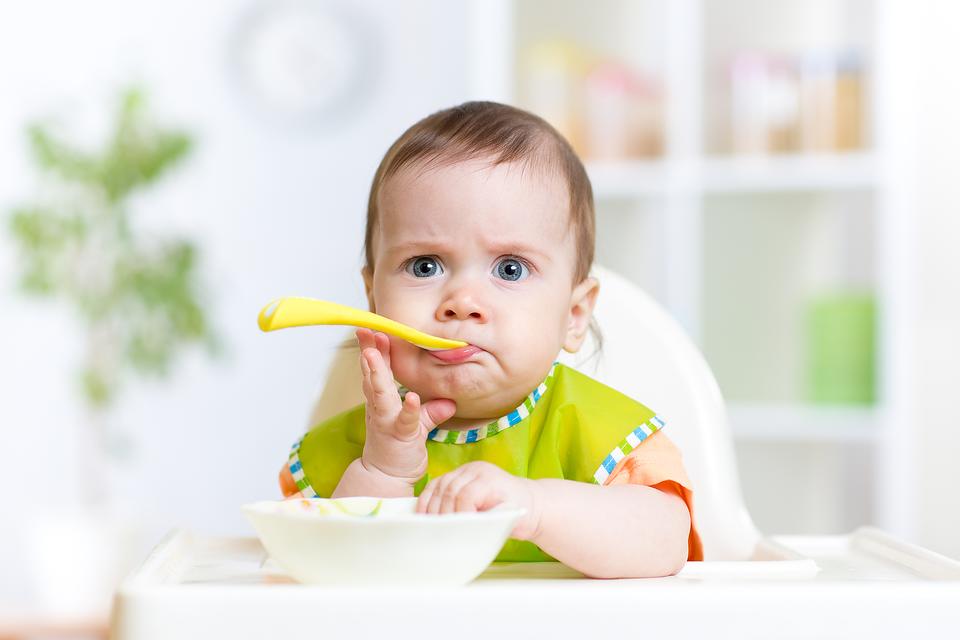 The good thing? At least I know exactly what’s in each pouch and that every bit is good for them. So if you’ve got kids that aren’t too keen on their veggies, maybe this is a good way to get them to eat some nutrient packed foods.
The good thing? At least I know exactly what’s in each pouch and that every bit is good for them. So if you’ve got kids that aren’t too keen on their veggies, maybe this is a good way to get them to eat some nutrient packed foods.
The sweetness of the apple and pear in the veggies recipes cuts the flavor of the vegetables and makes it more palatable for discriminating taste buds.
Next up, we’ll be making some “purple” and “red” flavor profiles at the request of my son!
Some of our other mealtime essentials? Simple white bibs or a really cute printed option, like our bright herringbone bib (it’s so soft!), a great high chair (some of my fave high/low options are the Bloom Fresco, the Tripp Trapp and Ikea’s Antilop), and these Baeba spoons and spatula spoons.
Do you make your own homemade baby food purées for the little ones in your home? I’d love to hear if you try any of these!
It’s a great feeling to know exactly what’s in every spoonful you feed your baby.
If you don’t think you have the time or money to make baby food at home, Baby Food in an Instant cookbook and a multi-cooker will give you all the magic you need! You can whip up fresh flavors and just-right textures that you and your baby will both love―from nutrient-packed purees, to satisfy those toothless smiles, to first finger foods as your baby grows. In just minutes and on a budget, Baby Food in an Instant guides you to great meals ready to satisfy and help your baby explore all kinds of amazing tastes.
babyfood | The Snazzy Mom Blog
Posted in KIDS by The Snazzy Mom
Each child develops so uniquely and just because they are late at hitting a milestone doesn’t necessarily means it is a cause of alarm. As a new mom I had too many questions related to my son hitting his milestones, but I have realized in this 1 year, that we need to be patient and not stress about it.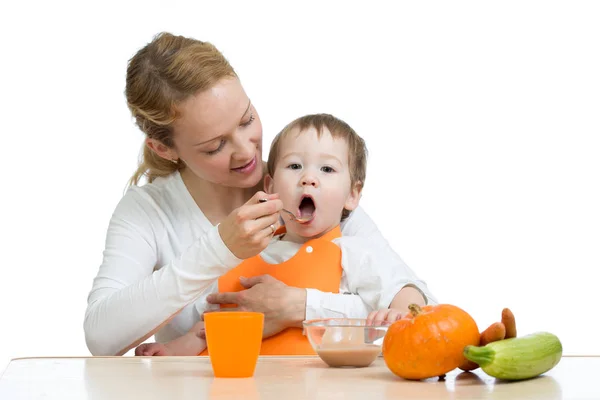
Eating solids for the first time is a huge milestone for every baby. As parents, we love to know that our babies are getting lots of nutrition and calories so they can grow big and healthy. I was nervous about feeding solids in the beginning and was worried whether my son would eat well, consume enough milk etc. But this was a temporary phase, since I religiously followed a routine of introducing solids daily. We started first with introducing fruits, veggies and later cereal. Most pediatricians, and the American Academy of Pediatrics, recommend introducing solid foods to babies when they are between ages 4 and 6 months. Vir was able to sit up around this age with support, and was showing interest in the foods he saw us eating. I realized it’s probably a good time to venture into feeding him solid food. Since my son was exclusively breast fed for 6 months, we waited until he turned 6 months to start solids.
I tried the Baby Led weaning approach right from the start. Baby Led Weaning is a method of introducing solid foods that leaves it up to your baby to decide what, when and how much to eat. While not necessarily a “hands off” approach, Baby Led Weaning does advocate allowing your baby to make all food choices for him or herself. You can read more about it here.
Baby Led Weaning is a method of introducing solid foods that leaves it up to your baby to decide what, when and how much to eat. While not necessarily a “hands off” approach, Baby Led Weaning does advocate allowing your baby to make all food choices for him or herself. You can read more about it here.
What I liked about it that there were no purees, no ice cube trays, no food processor, no potato masher, no baby rice, no weird fruit and veggie combo just eating wholesome food. Note : I followed the Four day rule , to make sure that my son is not allergic to any food items. Read more about it here
Note Milk is a child’s most important food in the first year of life and is still very important in the next few years. Children under 12 months of age should have breast milk or formula for their main drinks.
I am sharing below with you a list of Food items I introduced to my son.
Image credit – http://www.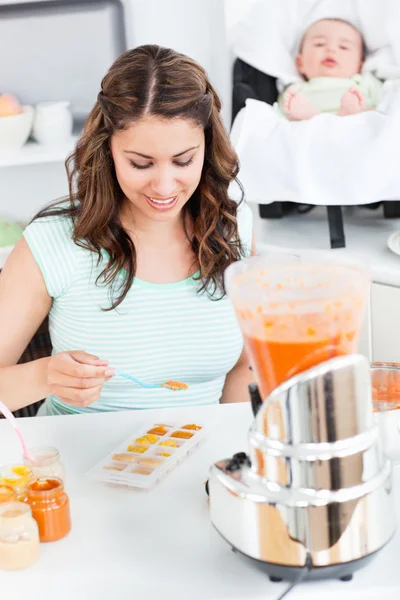 Alisandlois.com
Alisandlois.com
6-8 months+
- Baby cereal – Rice cereal, Oatmeal cereal and wheat cereal. Mixed with breast milk or formula . After my son got used to it , I added mashed bananas or stewed apples for flavor
- Fruits– To avoid choking I gave my son small pieces of banana, steamed apples and pears as finger food. My son hated avocadoes, it is great fruit for weight gain.
- Veggies: Steamed and boiled sweet potatoes and carrots chunks as finger food.
- Egg yolk only upto 8 months. I used to scramble it in butter. My son didn’t like the egg yellow boiled.
Note: Meat, chicken can also be given as it is rich in iron. I haven’t yet introduced it as I don’t eat it myself neither grew up eating it. However I am not opposed to my son eating meat. (Leaving that to my husband as he is non vegetarian
8-10 months+
My son didn’t have any teeth until he was 10 months, however the gums were strong enough to mash small pieces of food. I wanted to introduce new textures and real food so I prepared below simple meals for him and also introduced other new foods. All of the food items above are also a part of his diet.
I wanted to introduce new textures and real food so I prepared below simple meals for him and also introduced other new foods. All of the food items above are also a part of his diet.
- Toast with butter/hummus/peanut butter /cheese – Toast is my son’s favorite food. He was sucking small pieces and enjoying the new texture at 8 months and now he chews and eats it.
- Full fat cheese singles is his favorite snack; I also offer it between toast. I make Paneer (cottage cheese) at home from organic whole milk. I mixed small pieces of paneer with banana or apple to add flavor to it .
- Multigrain Roti (flatbread) made at home with multigrain flour, some ghee or butter. You can dip it in milk/formula to make the texture softer.
- Rice with Veggies– Rice mixed with carrots, potatoes and spinach cooked in ghee and butter with no salt and only some turmeric.
- Fruits– Apart from banana, apples and pears I also I introduced at this time strawberries ,blueberries , mango, peaches and kiwi.
 You can soften hard fruits by steaming or boiling it. We have stayed away from grapes as they can choke.
You can soften hard fruits by steaming or boiling it. We have stayed away from grapes as they can choke. - Yogurt– My son was not a huge fan of yogurt at the beginning, so later I started mixing it up with bananas, strawberries and also added very little sugar to get him used to the texture.
10 -12 months + Food recipes
Apart from all the above food, I also started making healthy meals to get him used to real food and interested in new flavors. I post a lot of videos on my Instagram stories of him enjoying his meal. And lately a lot of moms reached out to me for recipes of the food my son has been eating. Here I sharing some quick and easy to make recipes.
- Pancakes – This is by far the simplest and most preferred food. I simply add Half Banana (you can even substitute it with sweet potatoes) , 1 egg, 2 -3 tbsp multigrain flour (you can substitute it with wheat ,or oatmeal cereal or flour) and mix it all together.
 Spread it on the pan with some butter and it ready in no time. Easy to chew and also makes great ready to go meal.
Spread it on the pan with some butter and it ready in no time. Easy to chew and also makes great ready to go meal. - Rice, Lentil and veggie Mush (Khichdi)– Wash and soak the rice and dal in water for half an hour. Drain the water. In a pressure cooker, add the Rice, Dal, Garlic, onions, spinach, carrot and potatoes. Add 3 cups of water. Pressure cook till 3 whistles (one on high and 2 on medium).After the steam is released, add ghee or butter and serve. I give this everyday for dinner as it is an extremely nutritious meal
- Veggie Paratha or flatbread- For ease and convenience I add mashed and boiled potatoes, spinach and sometimes carrot to the flour directly and add in some water to make it in a dough. Roll it in small and thin circles and heat it on the pan until it is slightly brown and serve it with ghee or butter in small pieces. You can add some salt too.
- Fruit Bars with oatmeal-1/2 ripe banana, mashed. approx 3 to 4 tbsp rolled oats, 2 tbsp raisns.
 Preheat the oven to 350 deg F, 180 deg C. Grind the oats in a food processor OR leave them just as they are. The final texture of your fruity bars depends on whether or not you ground the oats – leaving them whole, of course, provides more texture than grinding them. Stir the oats into the mashed banana. The amount of oats you need depends on the size of the banana – you need to achieve a ‘doughy’ texture that you can shape with your hands. Stir in the raisins. Form the mixture into ‘bars’ then place on a lightly greased baking sheet. Cook for around 10 to 15 minutes until firm and lightly golden.Cool and serve. Freeze leftover bars for up to one month.
Preheat the oven to 350 deg F, 180 deg C. Grind the oats in a food processor OR leave them just as they are. The final texture of your fruity bars depends on whether or not you ground the oats – leaving them whole, of course, provides more texture than grinding them. Stir the oats into the mashed banana. The amount of oats you need depends on the size of the banana – you need to achieve a ‘doughy’ texture that you can shape with your hands. Stir in the raisins. Form the mixture into ‘bars’ then place on a lightly greased baking sheet. Cook for around 10 to 15 minutes until firm and lightly golden.Cool and serve. Freeze leftover bars for up to one month. - Oatmeal ,banana , Peanut butter muffins – This is another easy and ready to go recipe my son loves. It makes a great snack item too. Preheat oven to 350. Spray a mini muffin tin with cooking spray and set aside. Place 1 cup oats in a medium bowl and add 1 cup milk. Allow the oats to soak while you prepare the rest of the muffins.
 In a separate large bowl, mix together the 1 cup flour,1 tsp baking soda, 1/2 tsp salt and cinnamon. Some applesauce,1 tbsp peanut butter, 2 egg and 1 tbsp vanilla to the bowl with the soaked oats and stir to combine. Add and combine all the ingredients. The batter will be very runny. Bake at 350 for 13-15 minutes, until done. These are just barely sweet and great for little ones. If you want them to be sweeter, try adding sugar or maple syrup. Extras can be stored on the counter for 3 days, in the fridge for up to 5 days.
In a separate large bowl, mix together the 1 cup flour,1 tsp baking soda, 1/2 tsp salt and cinnamon. Some applesauce,1 tbsp peanut butter, 2 egg and 1 tbsp vanilla to the bowl with the soaked oats and stir to combine. Add and combine all the ingredients. The batter will be very runny. Bake at 350 for 13-15 minutes, until done. These are just barely sweet and great for little ones. If you want them to be sweeter, try adding sugar or maple syrup. Extras can be stored on the counter for 3 days, in the fridge for up to 5 days.
I hope this post is helpful for moms who are starting on the journey to give solids to their babies. Please reach out to me if you have any questions. Also if you can comment and share some recipes that worked for your baby, it will be extremely helpful for me and the readers.
For your convenience I have made a Meal plan print out listing out Carbs, Proteins and Veggies/Fruits options that can be given to kids. Click on below link.Toddler Meal Plan Print Out
Love
Like this:
Like Loading.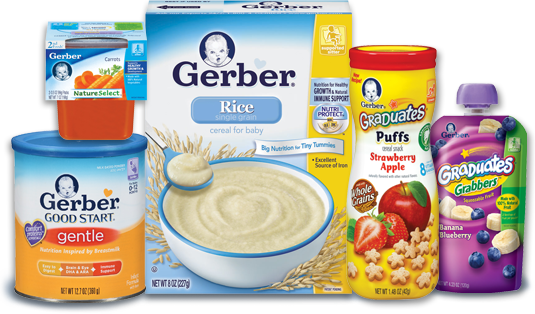 ..
..
The Snazzy Mom
Hi I am Arushi, a happily married full time working boy mom based in Austin, Texas. I started my blog in 2016 after the birth of my son and I share all things I love - mommy and me fashion, lifestyle, fitness, family adventures and of course all things on motherhood. The Snazzy Mom blog shall provide you with knowledge gleaned through my experiences, ideas and recommendations to stay stylish, have fun and live life to the fullest as a mom.
View Full Profile →
SearchFacebook Page
DIY Diwali Craft Ideas For Kids.
Ideas on How to Celebrate Holi in Your Child’s Classroom
Twinning: Mommy and Son Style
When I had to leave my 5 month baby for a Business trip.
Meal Ideas and Recipes For Babies & Toddlers! Free Meal Plan Printable Included.

- These 12 South Asian-Owned Businesses Will Be Your Go-To For Diwali and Holiday Season Gifting. October 26, 2021
- TOP 8 THINGS TO DO IN PCB WITH YOUNG KIDS August 17, 2021
- 12 Travel Must Haves For Kids That Make Traveling Easier For Parents. August 15, 2021
- Our Recent Family Vacation to Kauai, Hawaii in April 2021. April 25, 2021
- Celebrating Holi “The Festival of Colors” with Kids. DIY, Crafts, Recipes & More March 21, 2021
- How We Updated Our Kid’s Bedroom. Easy Ideas, DIY and More February 24, 2021
- 2020 Holiday Gift Guides for Moms & Kids December 14, 2020
- Gearing Up for Diwali at Home. Recipes, DIY crafts & More November 11, 2020
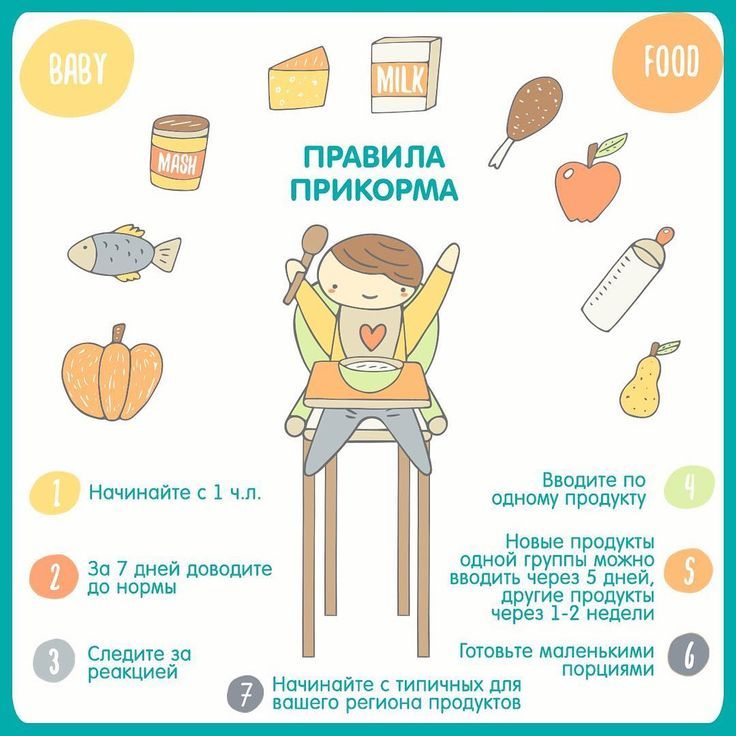 com activity ideas for kids appsfortoddlers babies baby babyactivities babycare babymusthave babyproducts babyregistry bestbabyproducts birth bump bumpfashion Cusco delivery diwali diwali2016 diwaligreetings DIY dogmom family family road trip familytravel family vacation fashion father festivaloflights fitness food happydiwali health healthylifestyle healthyrecipes healthysnacks Hiking Holi home homeschooling houstonblogger kidsfashion kidsfood labor lifestyle MachuPicchu maternity missinghome mom momblogger momlife momtips mother Motherhood newborn parent parenting Peru pet postpartum pregnancy pregnant preschoolers recipes road trip san antonio things to do tips Toddler toddlermeals Travel traveling with kids travelingwithkids travellingmom travel with kids Vacation weightloss
com activity ideas for kids appsfortoddlers babies baby babyactivities babycare babymusthave babyproducts babyregistry bestbabyproducts birth bump bumpfashion Cusco delivery diwali diwali2016 diwaligreetings DIY dogmom family family road trip familytravel family vacation fashion father festivaloflights fitness food happydiwali health healthylifestyle healthyrecipes healthysnacks Hiking Holi home homeschooling houstonblogger kidsfashion kidsfood labor lifestyle MachuPicchu maternity missinghome mom momblogger momlife momtips mother Motherhood newborn parent parenting Peru pet postpartum pregnancy pregnant preschoolers recipes road trip san antonio things to do tips Toddler toddlermeals Travel traveling with kids travelingwithkids travellingmom travel with kids Vacation weightlossHow to feed a child? Top Books on Baby Nutrition
Which of today's parents is not concerned about the nutrition of their child? It seems to someone that the baby eats too little, and it seems to someone that he eats enough - but not quite what he needs (or not at all).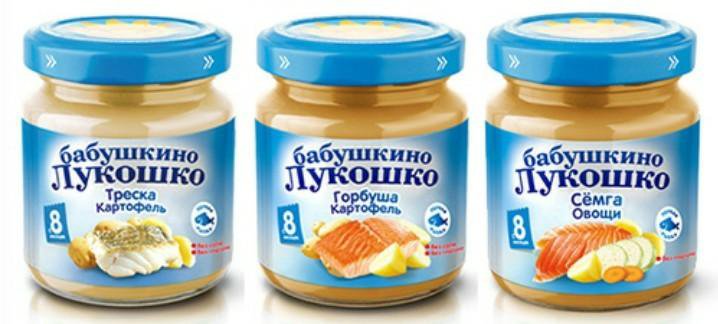 We receive a lot of information about healthy nutrition, including children's nutrition - but how to understand it and which experts can you definitely trust? We have compiled a list of the most reliable and proven books on healthy eating for children.
We receive a lot of information about healthy nutrition, including children's nutrition - but how to understand it and which experts can you definitely trust? We have compiled a list of the most reliable and proven books on healthy eating for children.
1. PRO nutrition for children. Without tears and persuasion, Alexandra Sitnova
One of the most popular books on baby food in the Russian-speaking world. Written by a nutritionist who has been blogging on Instagram (@pro_appetit) for a long time — Alexandra Sitnova. Written as simply and accessible as possible, perfect for "beginning moms." After all, how many disturbing questions are connected precisely with the nutrition of babies: is he getting enough milk? Is he gaining weight well? Maybe you need to add the mixture? Or is food better? So which product to start with? And when to start feeding from the common table? Alexandra's book was published in the "Doctor Blogger" series, which means that the knowledge and experience of pediatricians, allergists, and scientists were used in its writing. nine0003
nine0003
2. “Baby Nutrition in the Big City”, Regina Doktor
But Regina Doktor is a professional therapist herself, specializing today in nutrition. She wrote 2 wonderful bestsellers: “Healthy Eating in the Big City” and “I DON'T LIKE SWEET”, in which she laid out the basic principles of healthy eating in a very systematic and at the same time fascinating way. The book about baby food is no less informative and useful. It helps to calmly go through all the exciting stages of complementary feeding, to move from stress and not understanding what to do, to the magical realization that you are finally doing everything right. Regina Doctor talks about the ideal preparation for pregnancy, and about the nutrition of the expectant mother (moreover, depending on the trimester), and even about childbirth ... Well, then everything that worries us even more: breastfeeding and artificial feeding, complementary foods, food allergies, intestinal problems, atopic dermatitis.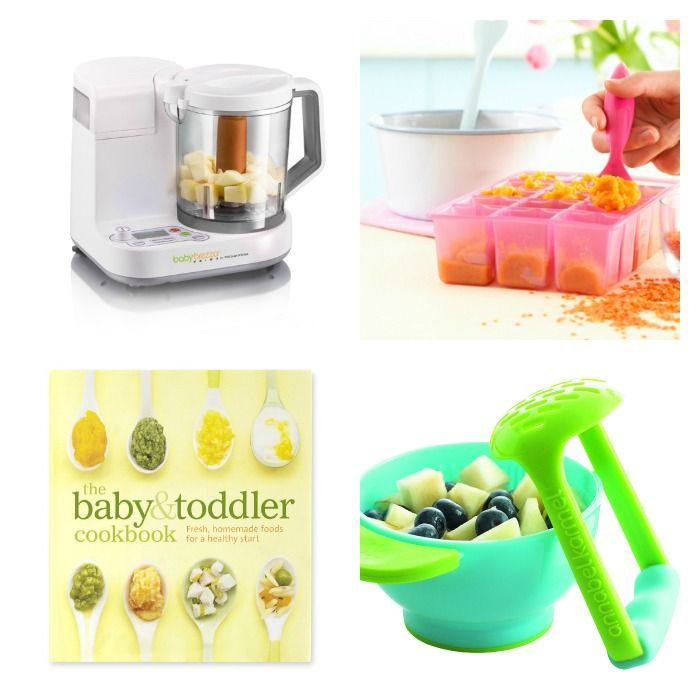 The book also contains exemplary diets for children over one year old - a very useful guide for all conscious parents. We also love Regina's book for lots of cool recipes like zucchini muffins, superhero borscht, and smart and smart roast. nine0003
The book also contains exemplary diets for children over one year old - a very useful guide for all conscious parents. We also love Regina's book for lots of cool recipes like zucchini muffins, superhero borscht, and smart and smart roast. nine0003
3. “First soup, then dessert”, Maria Kardakova
A very sincere and inspiring book, mainly devoted to the nutrition of children from one to 7 years old. Its main message is that it is important not only to form a complete children's diet; it is even more important to instill healthy habits in the child, thanks to which he will consciously eat even when he becomes an adult and moves out from caring parents. To establish a healthy relationship with food, the first complementary foods are very important - Maria will tell you how not to make mistakes at this stage - as well as the psychology of nutrition in the family as a whole. Therefore, in the book you will find a lot of clear recommendations: both on the ratio of products and portion sizes, and on how to color the process of eating with a solid positive. For parents who are just getting into the topic of healthy eating and changing habits to more environmentally friendly ones, this is just a treasure trove of basic knowledge. For further immersion in the topic, you can also look at the author's Instagram profile - @marysstories. nine0003
For parents who are just getting into the topic of healthy eating and changing habits to more environmentally friendly ones, this is just a treasure trove of basic knowledge. For further immersion in the topic, you can also look at the author's Instagram profile - @marysstories. nine0003
4. “My child doesn't want to eat. How to turn feeding into pleasure”, Carlos Gonzalez
You frantically calculate grams of squash puree, get nervous, upset if the baby ate “less than normal” ... you start to persuade, entertain, and then insist ... Familiar? Then read this book and relax. The process of eating should not turn into a battle. Never force a child to eat - never for any reason. Let it be for you a manifestation of love and respect! Dr. González, a father of three and a famous pediatrician from Barcelona, knows what he's talking about. nine0003
5. “Tasty for kids. Learning to cook for the fussy”, Maria Ivanova
From theory to practice.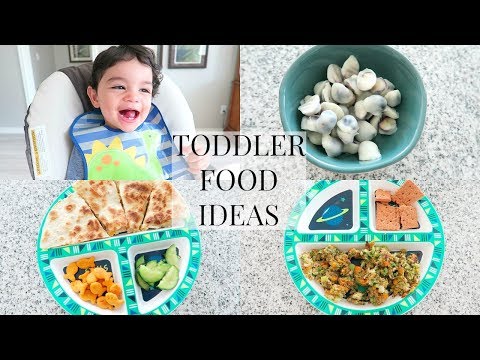 Catch 55 great recipes that even the pickiest kid will love. Maria suggests using healthy ingredients and paying attention to design and presentation - children love it. In the book you will find soups, salads, and cottage cheese dishes (a valuable protein, you remember) ... well, some sweet pastries, sometimes you can! And another nice bonus of the edition is its wonderful design. You will see, your kid will be happy to leaf through the book and choose a recipe for dinner. nine0003
Catch 55 great recipes that even the pickiest kid will love. Maria suggests using healthy ingredients and paying attention to design and presentation - children love it. In the book you will find soups, salads, and cottage cheese dishes (a valuable protein, you remember) ... well, some sweet pastries, sometimes you can! And another nice bonus of the edition is its wonderful design. You will see, your kid will be happy to leaf through the book and choose a recipe for dinner. nine0003
6. “Dr. annamama, I have a question. How to feed a child?”, Anna Levadnaya
Another basic book about healthy baby food from a pediatrician, neonatologist and - no less! – Candidate of Medical Sciences Anna Levadnaya (@doctor_annamama). All burning topics are revealed: breast and artificial feeding, weaning, introduction of complementary foods, allergen foods, toddlers, intestinal infections ... The book is perfect for those who are expecting a child or have just become a parent - in order to systematize information from numerous sources and not get confused.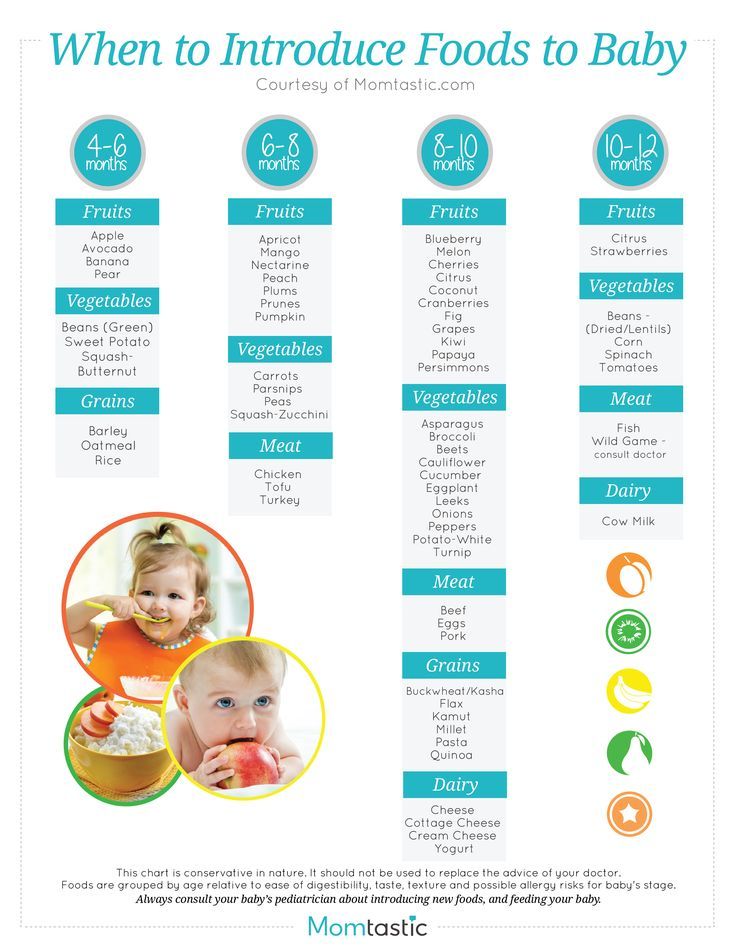 Curious questions are also covered, such as the effect of heating in the microwave on food or the need to take vitamins. Little "water", a lot of practical important information - for this we love books written by professional doctors. nine0003
Curious questions are also covered, such as the effect of heating in the microwave on food or the need to take vitamins. Little "water", a lot of practical important information - for this we love books written by professional doctors. nine0003
7. "Love and Broccoli: In Search of Children's Appetite", Svetlana Kolchik
And in conclusion - a little entertaining, a little instructive book from a journalist and part-time mother of Svetlana Kolchik. Faced with painfully familiar questions like “What should I feed my baby?” and “How to make him friends with food?”, she decided to study how things are with baby food in other countries. She talked to pediatricians, nutritionists and just parents from France, Italy, Germany and the UK and compared their approaches with those of Russian specialists. It turned out fascinating and witty, with a bunch of real stories and opinions. nine0003
Did you find the article helpful? Add to bookmarks so as not to lose!
Post Views: 343
why the children's goods sector benefited from the crisis
The children's goods market today is more and more like an ancient horror story.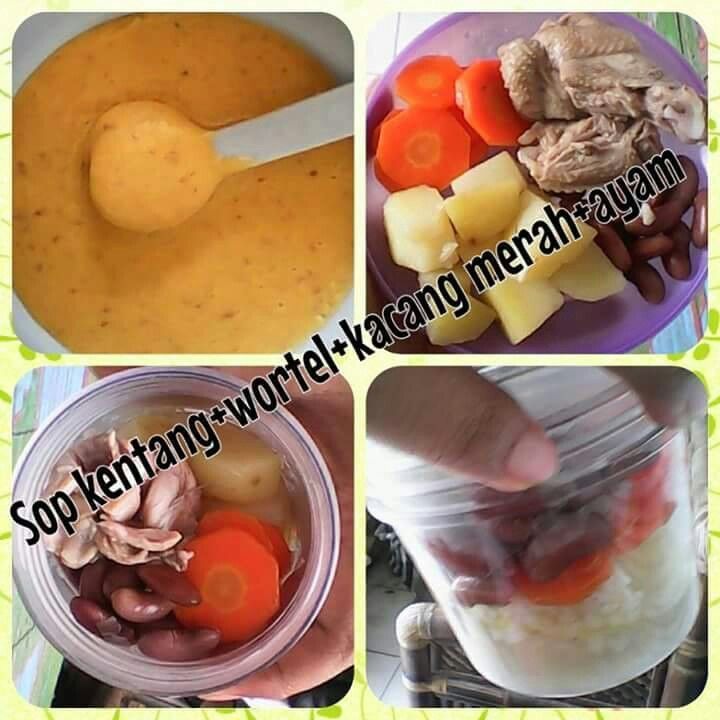 Players find themselves caught between the Scylla of crisis and the Charybdis of fierce competition. The latter is observed even between different segments. Unbelievable, but true: in this situation, premium brands have settled in quite well. Why did it happen, how do representatives of other segments feel, and with what tools to look for the key to the parent's heart, did the i-Guru digital agency find out. nine0003
Players find themselves caught between the Scylla of crisis and the Charybdis of fierce competition. The latter is observed even between different segments. Unbelievable, but true: in this situation, premium brands have settled in quite well. Why did it happen, how do representatives of other segments feel, and with what tools to look for the key to the parent's heart, did the i-Guru digital agency find out. nine0003
Look for a mother
Of course, in the first months and even years of life, the main person who determines what a child will eat, what clothes and brands of diapers will wear, is his mother. Already today there is a tendency to increase the age when women have their first child. In recent years, it has been 28-30 years. And gradually, the number will rise. By 2020, the average age of the birth of the first child will be 30-34 years (source: Rosstat, May 26, 2016). And at a more mature age, parents have greater financial resources and can afford to buy expensive children's things. For many of them, the high price of a product automatically means its quality. nine0003
For many of them, the high price of a product automatically means its quality. nine0003
Hence the success of premium brands, because mothers want only the best for their children. In any case, from the point of view of creativity and targeting, it is worth focusing on the audience of mothers, focusing less on their age, and more on the age of children. Focusing on this segment will allow you to effectively invest your advertising budget. Next, we will look at which sites on the Internet mothers visit most often and with the help of which digital tools to “talk” with them. But before that, a brief overview of the demographic situation. nine0003
Photo depositphotos
Demographics and demand
In the last couple of years, the birth rate in Russia has remained still high. For example, the number of newborns in 2015 was almost two million. However, this trend promises to decline in the coming years.
But the dynamics of the market, according to research, is positive both in monetary and physical terms.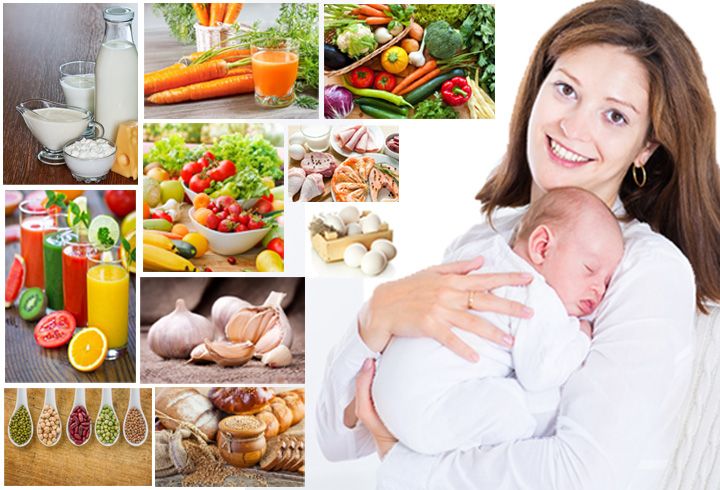 For example, this can be seen in the example of organic baby food. In recent years, the number of "progressive" mothers who are positive about the idea of complementary foods and the use of organic mixtures has increased. And according to forecasts, in the future, the demand for these products will only increase. nine0003
For example, this can be seen in the example of organic baby food. In recent years, the number of "progressive" mothers who are positive about the idea of complementary foods and the use of organic mixtures has increased. And according to forecasts, in the future, the demand for these products will only increase. nine0003
Baby food. Share of sales in value terms in 2014 and growth compared to the previous year in selected markets
Source: Nielsen retail market research (August 2015) terms of daily use goods. According to Tatyana Semina, Marketing Director of Nutricia Russia, in general, consumer behavior in the same baby food market did not change much during the crisis. The majority - 61% of the parents surveyed - did not notice a change in their consumer habits. Another 17% switched to more budget-friendly options and only 10% started buying fewer products ( Source: Nutricia Russia (Danone) - approx. author ).
But steady demand gives rise to persistent supply.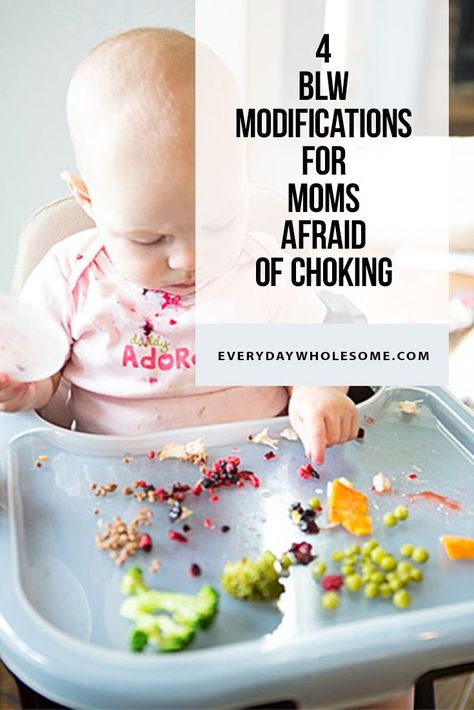 So today the main difficulty in the field of children's goods is precisely the oversaturation of the market and the need to distance oneself from competitors. What is worth paying attention to here?
So today the main difficulty in the field of children's goods is precisely the oversaturation of the market and the need to distance oneself from competitors. What is worth paying attention to here?
Everything natural is simple
Modern mothers want to be the experts for their children. They are rational in their choice and thoroughly study the composition of baby food, and the most important thing for them is the safety and quality of the product. The main criterion by which customers today make a choice is the absence of unwanted ingredients. Recently, there has been a desire among the audience for organic nutrition (this applies not only to children's products). nine0003
Our compatriots try to avoid artificial preservatives, flavors and dyes, antibiotics, hormones and GMOs. Of course, these same parameters apply to the choice of baby food. Therefore, if you are promoting a product made exclusively from natural ingredients, you must use this as one of the main drivers.
Unwanted ingredients
Source: Nielsen, August 2015
And the clock is ticking
Another common problem in the promotion of all children's products (whether it's food, diapers or clothes) is considered to be a short time period of purchase. On average, this is three years, after which the parent audience is updated and everything has to be started all over again. In other words, every 3 years you get new moms with a completely different buying motivation, with different priorities that become selection factors.
You need to be able to adapt to this, find fresh insights, test new formats, in a word, experiment. Yes, there are always risks. But these are justified risks. If you don't take risks, you won't be able to find the key to the new generation. In this case, the advertising agency, firstly, must keep abreast, study the audience in detail, and, secondly, offer non-standard ways to convey information to the mother-customer. The latter must be done in order to build up from numerous competitors. nine0003
The latter must be done in order to build up from numerous competitors. nine0003
And, of course, the best platform for experiments is our favorite digital, which allows you to measure the effectiveness of each tool, test new approaches, quickly respond to changes and use non-standard ideas.
Internet sites and social networks
Despite the fact that the main sources of information for young mothers are still traditional media and word of mouth, today this audience is actively present on the Internet.
Sources of product information
Source: Nielsen Global Report, Q3 2015, Russia
They use almost all online services, with a particular interest in online shopping. At the same time, mothers do not just “shop-window” (although, where without it), they make purchases online. Often, this is due to the lack of free time and the desire not to spend an outstanding quiet minute going shopping, devoting it to yourself.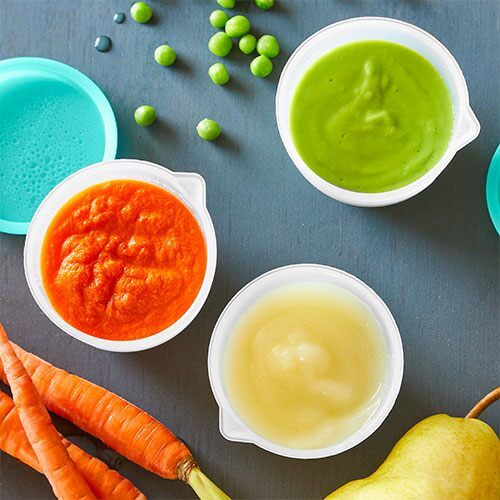 This style of behavior is especially typical for residents of large cities (Moscow, St. Petersburg, Yekaterinburg, etc.). nine0003
This style of behavior is especially typical for residents of large cities (Moscow, St. Petersburg, Yekaterinburg, etc.). nine0003
The main sources of information in the digital environment are community sites for parents. And social networks can become a launching pad for the development of a community around the brand. However, keep in mind that each of the social networks has its own reasons for using it. On Facebook and Vkontakte, mothers are looking for support: they read about other people's experiences, ask for advice and tips.
On Instagram, a purely visual network, on the contrary, they want to show their lives and see how others live. In some social networks, the mother spends time for her own benefit, in others she comes in to read something on the topic of raising a baby. Trying to captivate her with content about a child on a site where she came to get distracted and relax is an almost useless exercise. nine0003
Digital tools
In conclusion, a little about how to work with the audience if you are introducing a new brand or reviving trust in a forgotten brand.







